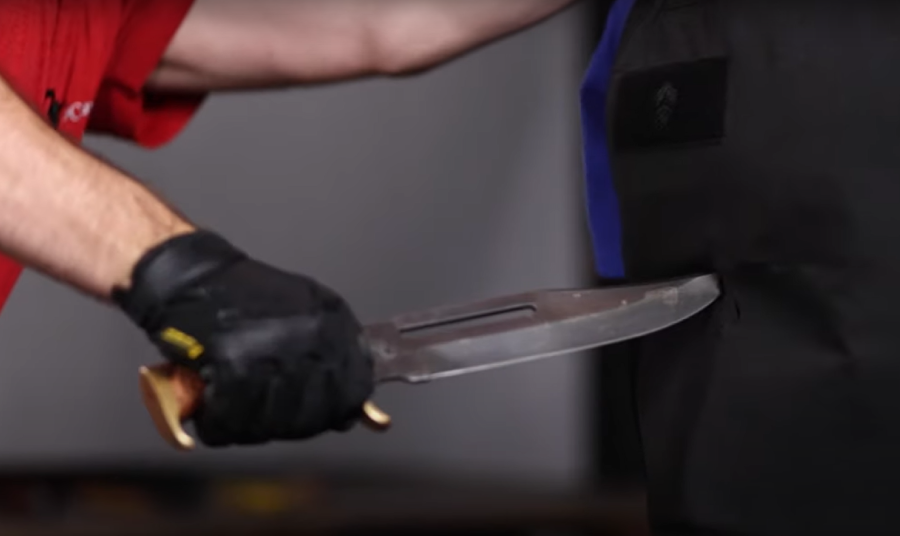When it comes to the protective capabilities of bulletproof vests, one of the most common questions is: Are they also stab-proof? The answer, quite simply, is that it depends. Just as bulletproof vests are rated by the National Institute of Justice (NIJ) for their ability to stop various calibers of bullets, they are also rated for their resistance to stabs and punctures.
Understanding NIJ Ratings
In accordance with NIJ Standard 0115.01, to test stab resistance, a “guided drop assembly” must be used against the vest. This involves dropping a sharp, spike-like implement onto the vest from a height of 14 feet. The testing energy levels vary: 24 Joules and 36 Joules for commercial threats like kitchen knives, pocketknives, ice picks, and awls, and 43 Joules and 65 Joules for more improvised threats, such as blades and spikes that could be fashioned by inmates.
While many brands claim their vests are fully "stab-proof," not all have the NIJ certification to back it up. This distinction is crucial for those seeking maximum protection.
BulletSafe's Stab Resistance
At BulletSafe, we value honesty and integrity. While have independently tested our vests to ensure that they are stab-resistant, though they have not undergone the NIJ's rigorous stab-proof testing. Our independent tests ensure that our vests can save lives in real-world scenarios involving blades or screwdrivers. This applies to our soft armor, such as the VP3 vest.
The Rigid Armor Difference
When considering rigid armor, like bulletproof plates made of ceramics or steel, these materials are inherently stab-proof due to their hardness. The physics behind it is simple: it's nearly impossible for even the strongest person with the sharpest blade to pierce through rigid armor. The ceramics used in our Level IV armor are exceptionally hard, and sharp knives, which are typically brittle, stand no chance.
The reason a knife can't penetrate hard plates is the same reason a strong swordsman can't cut through even mediocre steel armor. When a high-velocity projectile strikes a ceramic plate, the energy causes the ceramic to fracture and absorb the impact through a pattern of cracks. However, the average human simply cannot deliver a blow with the speed and force of a bullet.
When a knife is used to stab, the contact area is much larger compared to that of a bullet. This means the force exerted is spread over a larger area, reducing the pressure and making it insufficient to penetrate the ceramic. This, combined with the limitations of human muscle, makes most modern hard armor impervious to stabbing or slashing.
In summary, while soft armor may offer significant protection against stabs, only rigid plates can truly be considered stab-proof. Understanding these differences and NIJ ratings is essential for anyone seeking comprehensive protection. Whether facing bullets or blades, knowing your vest's capabilities can make all the difference.
To shop BulletSafe bulletproof vests, click here.
FAQs About Bulletproof Vests and Stab-proofing
1. Are bulletproof vests stab-proof?
Yes, some bulletproof vests are also rated for stab resistance depending on their NIJ certification.
2. How are stab-proof vests tested?
Stab-proof vests are tested using a 'guided drop assembly' with varying energy levels against sharp implements.
3. Are all brands claiming to be stab-proof truly certified by the NIJ?
No, not all brands claiming to be stab-proof have the NIJ certification to back it up.
4. Is soft armor like the VP3 vest stab-resistant?
Soft armor like the VP3 vest has been independently tested for stab-resistance but has not undergone NIJ's rigorous testing.
5. Why are rigid armor plates considered stab-proof?
Rigid armor plates made of ceramics or steel are inherently stab-proof due to their hardness and the physics behind it.

